
Information + sustainability
I grew up near Portland, Oregon in the 1980’s and 1990’s. At the time, and even more so now, it was a place where the environment was front and center in daily life. Recycling was mandatory, with steep fines for not properly sorting cans and bottles, or placing something recyclable in the garbage. Community gardens were everywhere, with prominent public composting and vibrant collections of neighborhood greens. My public primary school taught us Native perspectives on relationships to nature, detailed histories of overfishing of northwest salmon, and depicted our fragile human existence as protected by a thin layer of ozone, protecting us from the sun’s radiant ultraviolet light. Bicycles were everywhere, I regularly saw cars that ran on biofuel, and most school field trips involved hiking into the woods to literally hug trees, thanking them for absorbing the dangerous carbon dioxide we emitted with every breath.
And yet, as I entered graduate school, and begin to attend academic conferences, I did not think twice about my trips around the world. In just six years of study, I flew from Pittsburgh to Florida, Rhode Island, San Francisco, Austria, New Zealand, Italy, China, the United Kingdom, Alberta, British Columbia, California, Missouri, Germany, Nebraska, Colorado, India, Massachusetts, Georgia, Switzerland, and back home to Portland at least twelve times. Despite all of the cans, bottles and paper I recycled, all of the lights I diligently kept off, all of the trees I planted, all of the buses I rode, and all of the donations I’d made to saving fish and rain forests, in those six or so flights per year, my family’s carbon output went from an already very high 15 tons of CO2 per year (mostly from our use of inefficient natural gas radiators and driving), to 40 tons of CO2. There simply was no information or feedback about my behavior on carbon output, or its broader impact on climate change.
These two stories show how entangled climate change is with information: the journalism and education shape our understanding of long term consequences of our behavior on the planet; feedback about our energy use shapes our future behavior; and as we inevitably face the increase in frequency and severity of global warming crises, information will be ever more central in helping humanity respond to crisis and survive. What kinds of information systems about sustainability do we need to survive?
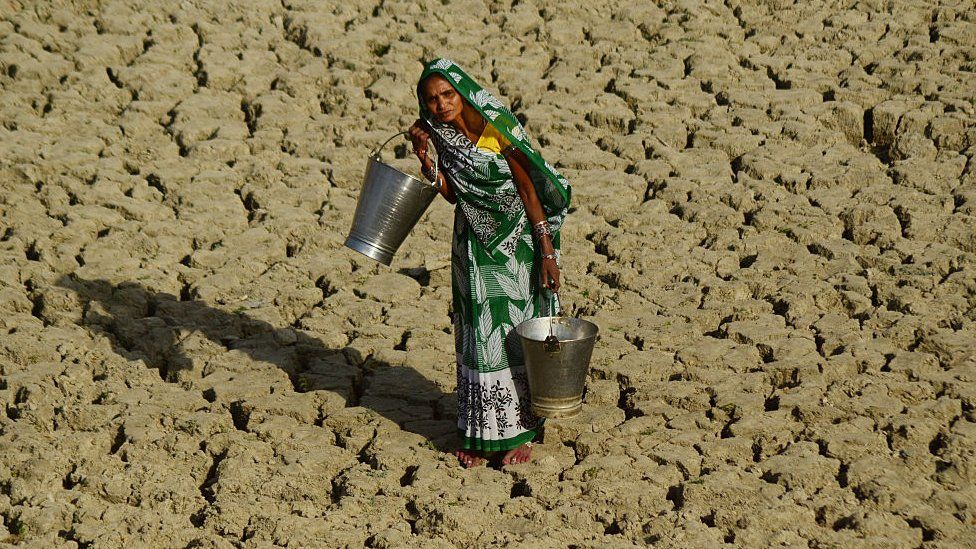
The information system of climate science
While there are many sustainability issues that humanity faces—from issues of biodiversity, air pollution, energy sources, waste management, and water scarcity—climate change interacts with all of these, threatening to overheat us, eliminate our access to food and water, flood our coastal towns and cities, and fill our air with toxic smoke from wildfires. At the heart of understanding these climate phenomena has been information, carefully gathered over a century of diligent scientific work. And at the heart of our reluctance to change our behavior has been the challenge of communicating this information to the public, as well as the active sharing of misinformation and disinformation by fossil fuel companies and politicians.
The information story of climate science begins in the 18th century, when scientists were just beginning to build rigorous foundations of physics, chemistry, biology, and human behavior. One of the first major discoveries about climate came from geologists, who had just begun to notice in their examination of the many diverse layers of materials in rocks and Earth that there had been a succession of geological ages, and that the Earth might have a hot volcanic core that explained these various layers. While geologists studied the Earth’s crust, national weather agencies began measuring temperature, rainfall, and other weather phenomena in the Earth’s atmosphere. Most of this data was regional, most of the scientific modeling was primitive, with statistics still in its infancy, and there were not yet theories about how such local effects can have global consequences. There were, however, many conflicts between these emerging sciences and religion, which had conflicting accounts of the age of Earth 16 16 Davis A. Young (1995). The Biblical Flood: A Case Study of the Church's Response to Extrabiblical Evidence. University of Michigan.
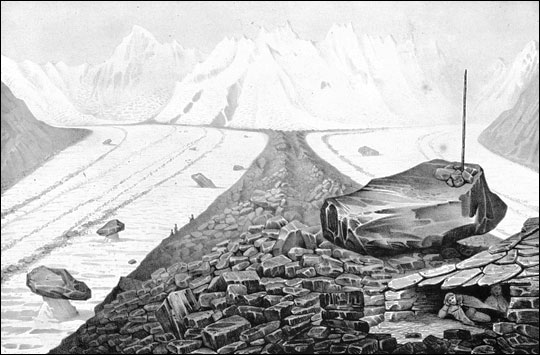
At the turn of the 19th century, scientists began to take the regional information about Earth and its atmosphere and integrate it into more global theories about Earth’s history 15 15 S. Weart (2003). The Discovery of Global Warming. Harvard University Press.
Edward Paysome Evans (1887). The authorship of the glacial theory. The North American Review.
Meanwhile, physicists were trying to explain how the Earth remained so warm when space was so cold. In 1824, Joseph Fourier hypothesized that Earth had an “atmosphere” that caused light from the sun to be absorbed and emit infrared radiation in response, increasing surface temperatures of Earth, like a greenhouse captures the heat from light. This led to the emergence of atmospheric science, leading to several laboratory discoveries that tested Fourier’s theory of atmosphere, eventually discovering that water vapor, and hydrocarbons like methane and carbon dioxide strongly block radiation, suggesting that increases in carbon dioxide might result in less heat escaping from the atmosphere, warming the planet. Notably, inventor, scientist, and women’s rights activist Eunice Newton Foote demonstrated in 1856 that carbon dioxide trapped more solar heat than other gases, theorizing that the more the atmosphere was composed of it, the warmer the Earth might get. At the time, she wasn’t given credit and her paper wasn’t included in the proceedings, since the AAAS professional society didn’t allow women members. Her work was read by a man and his reading was published under his name, eventually leading scientists to build upon her observations. These later experiments in the 19th century confirmed Foote’s observed association between carbon dioxide in the atmosphere and the Earth’s temperature 1 1 Svante Arrhenius (1896). On the influence of carbonic acid in the air upon the temperature of the ground. The London, Edinburgh, and Dublin Philosophical Magazine and Journal of Science.
Thus began a race at the beginning of the 20th century to try to understand the causes behind the correlations between carbon dioxide and temperature. Early experiments did not show strong relationships between significant sources of carbon output, such as the burning of coal, and infrared absorption. But it turned out that these early experiments were just not accurate enough; later experiments with more precise instruments confirmed the effects. Geologists tested theories of natural variation in climate over history by examining tree rings, but early efforts struggled to rigorously distinguish tree ring patterns from noise. It wasn’t until the 1950’s, with improved spectrography (methods of measuring light composition), that scientists observed that there was little water vapor in the atmosphere, and so most variation was explained by carbon dioxide released from fossil fuels, which was not absorbed by the ocean. In the 1960’s, the advent of computers led to even more sophisticated versions of Arrhenius’s models from sixty years earlier, precisely modeling and predicting the Earth’s slow rise in temperature using from many factors, including carbon output 8 8 Syukuro Manabe, Richard T. Wetherald (1967). Thermal equilibrium of the atmosphere with a given distribution of relative humidity. Journal of the Atmospheric Sciences.
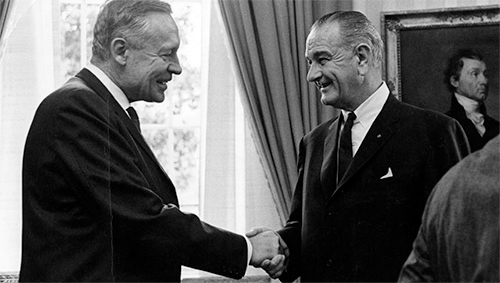
In a landmark report, U.S. President Lyndon B. Johnson’s science advisory committee brought this emerging consensus into public policy, warning of the potential negative effects of fossil fuel emission:
The part that remains in the atmosphere may have a significant effect on climate; carbon dioxide is nearly transparent to visible light, but it is a strong absorber and back radiator of infrared radiation, particularly in the wave lengths from 12 to 18 microns; consequently, an increase of atmospheric carbon dioxide could act, much like the glass in a greenhouse, to raise the temperature of the lower air.
As these warnings entered politics, the strength of the scientific evidence increased. By the 1980’s scientific consensus emerged through multiple sources of evidence from decreased aerosol pollution, increased fossil fuel use, and increase chlorofluorocarbons (CFCs), were all consistent with theories of carbon’s effect on infrared radiation deflection. Building on this consensus, research on climate change expanded, linking atmospheric sciences, computer models, geology, and even economics and behavioral sciences, expanding the natural science consensus to a consensus spanning all of academia. Climate scientist James Hansen, gave landmark testimony in 1988 to the U.S. Congress, sharing the consensus view of 200 years of data collection and modeling:

Global warming has reached a level such that we can ascribe with a high degree of confidence a cause and effect relationship between the greenhouse effect and observed warming...It is already happening now... NASA is 99% confident that the warming is caused by the accumulation of greenhouse gases in the atmosphere and not a random fluctuation.
While this consensus emerged, journalists and politicians struggled to report and act on the scientific warnings. Some news outlets exaggerated the reports, predicted imminent doom, then creating skepticism after the dire effects predicted by journalists did not materialize. Fossil fuel companies, protecting their interests, spread disinformation about climate change for decades. And public education in the U.S., mostly omitting education on climate science, and often providing arguments contrary to scientific consensus, created generations of youth confused and skeptical about its effects. Climate change activists, including former U.S. Vice President Al Gore emerged, engaging in public education on the climate science evidence in 2006, providing the most distilled versions of the science for to develop climate literacy.
And that distilled version is as follows. The sun’s radiation travels to our planet in the form of light. That heats up the earth, as it always has. Some of the radiation from that light is absorbed by the planet’s surface and some bounces off the Earth back into space in the form of infrared radiation. But some of that outgoing radiation is trapped by the Earth’s atmosphere surrounding our planet, trapping it inside. This is ultimately good for humanity’s survival: it keeps our planet warm enough to sustain life. But as humanity has burned fossil fuels, we have thickened the atmosphere, trapping more of the outgoing radiation, warming our planet further. Life on Earth thrives within a narrow band of temperatures, and so increases threaten to destabilize the many interdependent global ecosystems that allow us to survive.
This basic explanation of our planet’s relationship to the sun, and our impact on that relationship, is a fact that emerged from two centuries of data gathering, data modeling, data interpretation, scientific exchange, and eventually, science communication and education.
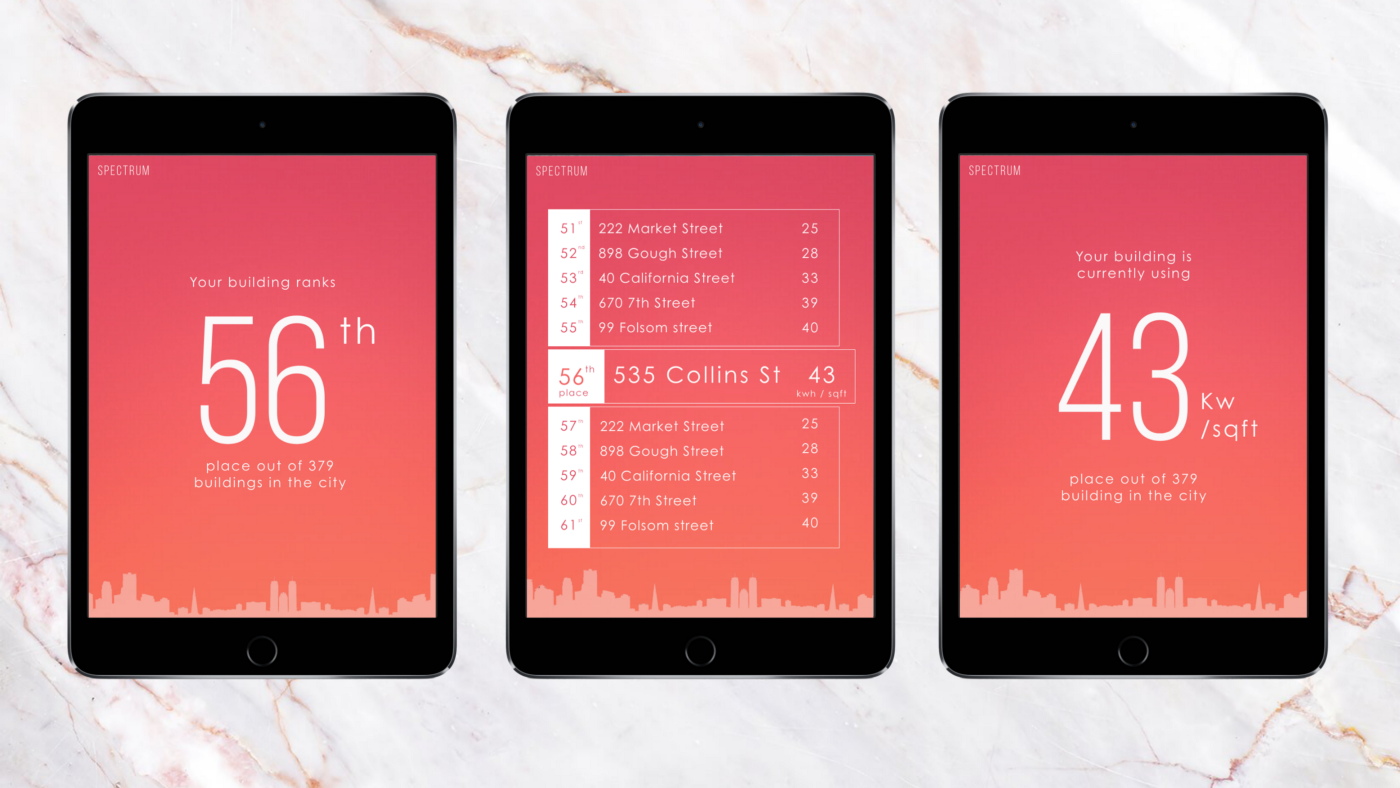
Designing for sustainability
Unfortunately, communicating scientific facts about climate change is not sufficient to change human behavior. Many do not believe the science above; many conservative politicians in the United States actively dismiss it, or dismiss the role of human behavior, or deprioritize policy change about the climate, ignoring the scientific consensus. Having clear data about the science, while necessary for knowing the truth, has not led to changes in behavior sufficient for lowering carbon dioxide output to levels to prevent catastrophe. However, many researchers believe that information can play a role in changing behavior, leading to more sustainable behaviors that preserve our ability to live on this planet.
The information problems underlying sustainability are numerous 3 3 Carl DiSalvo, Phoebe Sengers, and Hrönn Brynjarsdóttir (2010). Mapping the landscape of sustainable HCI. ACM Conference on Human Factors in Computing Systems.
Jon Froehlich, Leah Findlater, and James Landay (2010). The design of eco-feedback technology. ACM Conference on Human Factors in Computing Systems.
Ahmad Faruqui, Sanem Sergici, and Ahmed Sharif (2010). The impact of informational feedback on energy consumption—A survey of the experimental evidence. Energy.
Alessandra Varotto, and Anna Spagnolli (2017). Psychological strategies to promote household recycling. A systematic review with meta-analysis of validated field interventions. Journal of Environmental Psychology.
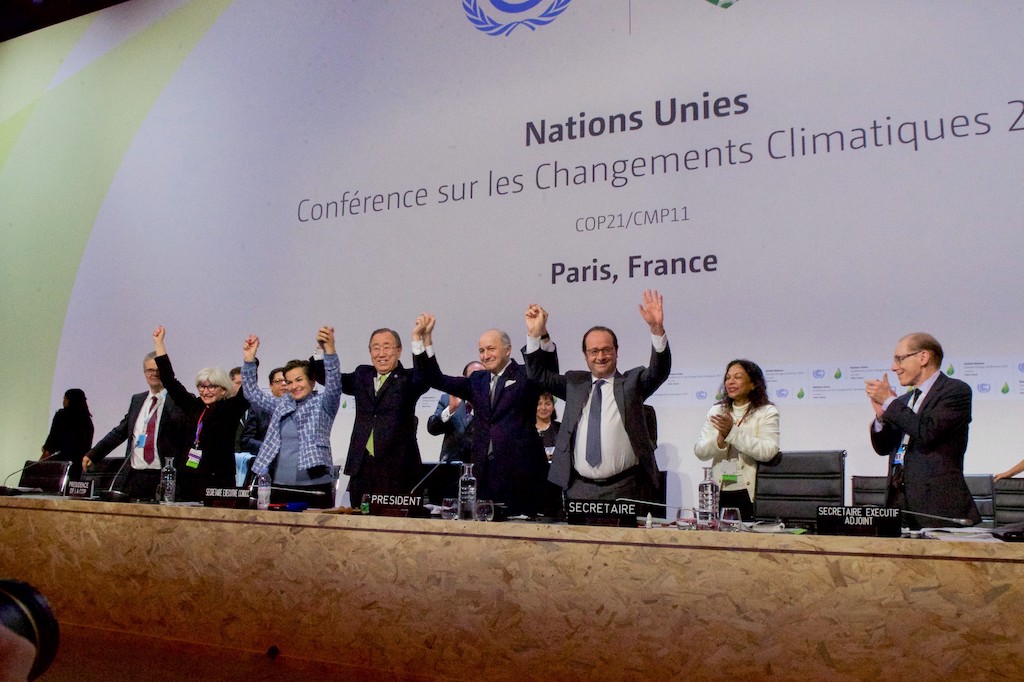
While information, tied with incentives, appears to be a promising approach to short term behavior change of individuals, there are reasons to be skeptical about their impacts on long term behavior. Some argue, for example, that focusing sustainability efforts on the individual ignores the much larger systemic factors such as policy, energy, and transportation infrastructure that shape carbon output; that the focus on technology over behavior change overlooks the dominant influence of habit, social norms, civic and cultural life; and that focusing on the power of designers, as opposed to civic leaders and policy makers, overlooks the necessary role of politics in making large scale, long term change 2 2 Hronn Brynjarsdottir, Maria Håkansson, James Pierce, Eric Baumer, Carl DiSalvo, and Phoebe Sengers (2012). Sustainably unpersuaded: how persuasion narrows our vision of sustainability. ACM Conference on Human Factors in Computing Systems.
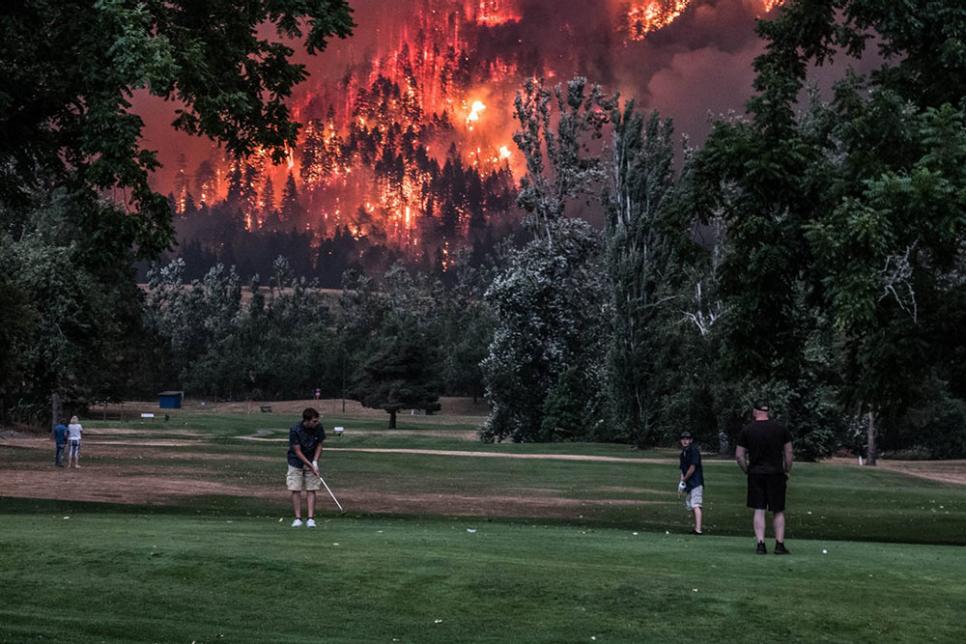
Managing crisis information
While researchers have made great strides in climate science and some progress on sustainability interventions, these efforts have been far too slow to prevent an increase in disasters likely partially caused by climate change. Cyclones, wildfires, droughts, and floods are killing more people than ever, making the hottest regions of our planets inhospitable, and costing governments hundreds of billions of dollars annually in crisis management and reconstruction. And most of these impacts affect the poorest countries of the world near the equator, which have the fewest resources to manage extreme weather events or migrate to safer regions of the planet. While efforts to reduce carbon output have never been more urgent, it is already too late to prevent an increase in such crises. While humanity works on finding more sustainable sources of energy, researchers are therefore also working on better ways of using information to manage crises.
Such work began in 2007 under the phrase crisis informatics , which includes empirical study as well as information system design to better support crisis situations 10 10 Leysia Palen, Sarah Vieweg, Jeannette Sutton, Sophia B. Liu, and Amanda Hughes (2007). Crisis informatics: Studying crisis in a networked world. Proceedings of the Third International Conference on E-Social Science.
R. R. Dynes (1970). Organized Behavior in Disaster. Lexington Books.
- Pre-disaster , a stable social system prior to impact
- Warning , which includes sharing of imminent threat in a social system
- Threat , which prompts individual “survival” action in a social system
- Impact , which prompts shifts from individual to community action
- Inventory , which prompts a collective account of impact
- Rescue , which prompts disorganized localized action on impact
- Remedy , which prompts organized and professional action on impact
- Recovery , which involves individual rehabilitation, community restoration, and organizational efforts to prevent recurrence.

Crisis informatics recognizes that each of these distinct stages of a crisis requires information, information technologies, and information systems to minimize fear and harm in both the short and long term and to prevent further crisis. Consider, for example, a case study of two climate-related events in 2009, the Oklahama grassfires and the Red River floods 14 14 Sarah Vieweg, Amanda L. Hughes, Kate Starbird, and Leysia Palen (2010). Microblogging during two natural hazards events: what twitter may contribute to situational awareness. ACM Conference on Human Factors in Computing Systems.
Kate Starbird, Leysia Palen (2011). "Voluntweeters": self-organizing by digital volunteers in times of crisis. ACM Conference on Human Factors in Computing Systems.
While many such studies reveal the powerful role of open social media platforms in broadcasting information, other studies show that social media, unlike journalism, is particularly prone to rumor and misinformation. One study of the 2010 Chilean earthquake demonstrated how false rumors and confirmed news propagated throughout Twitter during the crisis 9 9 Marcelo Mendoza, Barbara Poblete, and Carlos Castillo (2010). Twitter under crisis: can we trust what we RT?. First Workshop on Social Media Analytics.
Twitter, of course, and social media in general, are not the only information systems important in preventing, managing, and recovering from crises. As climate crises become more common, communities will need more robust early warning systems about the climate (typically government funded scientific endeavors), more organized and trained professional response teams, more redundant information and communication technologies that do not assume the a functioning internet or internet connection, and more intentional platforms for collective organizing to respond to novel crises. And most importantly, information systems will be required to motivate individuals, communities, and governments to motivate the funding of this work, and the development of trust. Without these efforts, the inevitable rise in climate and other crises will be more damaging and disruptive than ever.
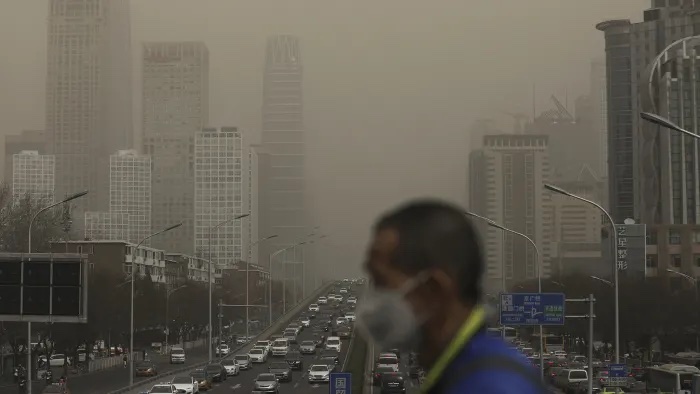
Fundamentally, information about the climate has the greatest potential to impact our lives, saving us from disaster and helping us find sustainable ways to preserve the fragile balance of our planet and its ecosystem. And yet, because this information is often so indirectly related to our behavior, so distant in our futures, many of the problems that we hope to prevent through information eventually translate into crises, in which information directly impacts our immediate well-being. Is it possible to stop this cycle of short-term focus, and long-term disaster? If the history of information and sustainability proves anything, it’s that information and information technology are necessary but insufficient to make change.
Podcasts
- Innovation, Not Trees. how Bill Gates Plans to Save the Planet, Sway, NY Times . An interview with Bill Gates, covering the many energy and information technology innovations required to reach net zero.
- The Birth of Climate Change Denial, Only Human, WYNC . Discusses the political origins of climate change denial and the use of misinformation to create doubt.
- What You Need to Know About Climate Change, Making Sense, Sam Harris . A conversation between Sam Harris and Joseph Romm, a leading climate science communicator.
- It’s Hot. It’s Flooding. Is This the New Normal?, What Next: TBD . Discusses the latest advances in causal analysis of climate change impacts.
References
-
Svante Arrhenius (1896). On the influence of carbonic acid in the air upon the temperature of the ground. The London, Edinburgh, and Dublin Philosophical Magazine and Journal of Science.
-
Hronn Brynjarsdottir, Maria Håkansson, James Pierce, Eric Baumer, Carl DiSalvo, and Phoebe Sengers (2012). Sustainably unpersuaded: how persuasion narrows our vision of sustainability. ACM Conference on Human Factors in Computing Systems.
-
Carl DiSalvo, Phoebe Sengers, and Hrönn Brynjarsdóttir (2010). Mapping the landscape of sustainable HCI. ACM Conference on Human Factors in Computing Systems.
-
R. R. Dynes (1970). Organized Behavior in Disaster. Lexington Books.
-
Edward Paysome Evans (1887). The authorship of the glacial theory. The North American Review.
-
Ahmad Faruqui, Sanem Sergici, and Ahmed Sharif (2010). The impact of informational feedback on energy consumption—A survey of the experimental evidence. Energy.
-
Jon Froehlich, Leah Findlater, and James Landay (2010). The design of eco-feedback technology. ACM Conference on Human Factors in Computing Systems.
-
Syukuro Manabe, Richard T. Wetherald (1967). Thermal equilibrium of the atmosphere with a given distribution of relative humidity. Journal of the Atmospheric Sciences.
-
Marcelo Mendoza, Barbara Poblete, and Carlos Castillo (2010). Twitter under crisis: can we trust what we RT?. First Workshop on Social Media Analytics.
-
Leysia Palen, Sarah Vieweg, Jeannette Sutton, Sophia B. Liu, and Amanda Hughes (2007). Crisis informatics: Studying crisis in a networked world. Proceedings of the Third International Conference on E-Social Science.
-
Katie Patrick (2019). How to save the world. BLURB Incorporated.
-
Kate Starbird, Leysia Palen (2011). "Voluntweeters": self-organizing by digital volunteers in times of crisis. ACM Conference on Human Factors in Computing Systems.
-
Alessandra Varotto, and Anna Spagnolli (2017). Psychological strategies to promote household recycling. A systematic review with meta-analysis of validated field interventions. Journal of Environmental Psychology.
-
Sarah Vieweg, Amanda L. Hughes, Kate Starbird, and Leysia Palen (2010). Microblogging during two natural hazards events: what twitter may contribute to situational awareness. ACM Conference on Human Factors in Computing Systems.
-
S. Weart (2003). The Discovery of Global Warming. Harvard University Press.
-
Davis A. Young (1995). The Biblical Flood: A Case Study of the Church's Response to Extrabiblical Evidence. University of Michigan.